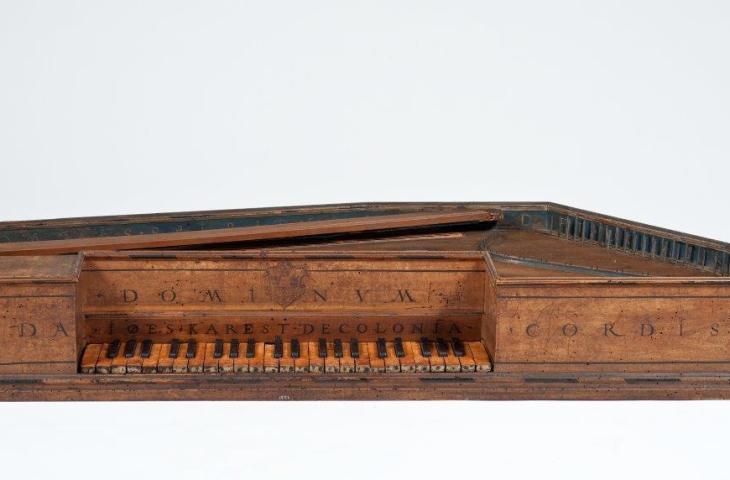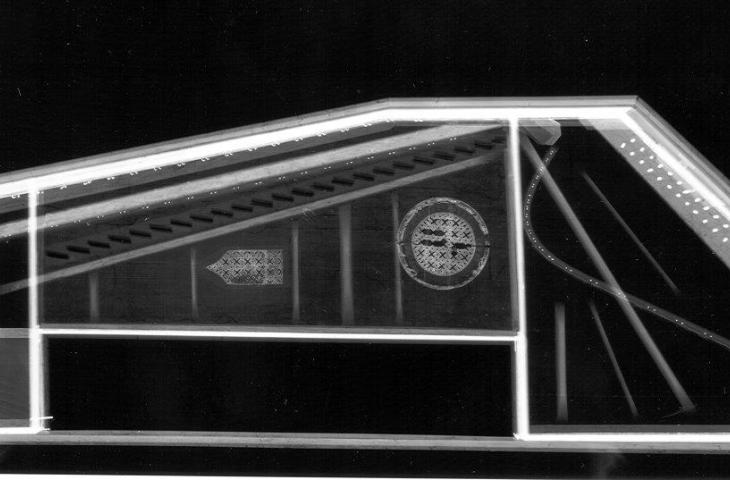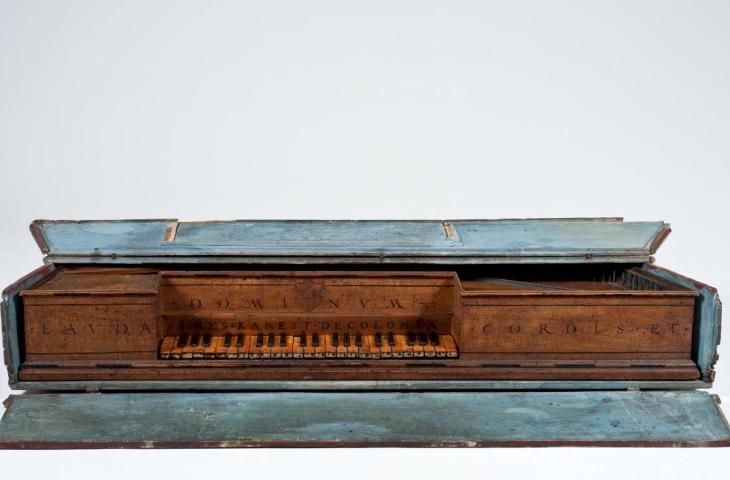December 2022
Fig.1

Polygonal Virginal, Ioes Karest, Antwerp, 1548, inv. 1587
Fig.2

Polygonal Virginal (X-ray), Ioes Karest, Antwerp, 1548, inv. 1587, KIK-IRPA
Fig.3

Polygonal Virginal (with box), Ioes Karest, Antwerp, 1548, inv. 1587
Fig.4

Polygonal Virginal (soundboard), Ioes Karest, Antwerp, 1548, inv. 1587
The virginal by Ioes Karest (fig.1) occupies a unique place in the history of keyboard instruments. Dated 1548, it is the oldest known Flemish virginal. It is also one of the few polygonal instruments to have been preserved, although several iconographic sources - notably two self-portraits of Catharina de Hemessen and several family portraits signed by Frans Floris and Cornelis de Zeeuw - attest to its use in the mid-sixteenth century.
The instrument bears the signature of Ioes Karest on the board just above the keyboard. Born in Cologne, probably shortly before 1500, the maker is listed as a citizen of the city of Antwerp in 1517. In 1523, he joined the Guild of Saint Luke, a group of Antwerp craftsmen, as a "clavichord maker who carved and painted". Some thirty years later, in 1558, he was one of ten or so colleagues who signed a petition demanding that keyboard instrument makers be given their own guild and regulations within the Guild.
From an organological point of view, the Karest virginal straddles the line between German and Italian construction. It prefigures the later Flemish virginals, particularly in terms of its internal structure, which could be observed thanks to the X-rays taken by the Royal Institute for Cultural Heritage (fig. 2). In contrast to the solid rectangular virginals built later, its body is made of thin maple walls (5-6mm) assembled in a dovetail joints. They are decorated with Latin inscriptions from Psalm 150 and reinforced at the top and bottom with thick two-tone mouldings. To prevent damage, the virginal was placed in an outer box - which has been miraculously preserved (fig.3)
The range of the instrument is limited as the keyboard has only 45 keys, or 4 octaves from C/E to c3. Unlike the Italian polygonal models, the keyboard is recessed into the body and the keys are guided by metal points rather than wooden tabs. But the natural keys are veneered with boxwood while the feints are made of swamp oak.
The soundboard is made of softwood. Originally it was decorated with painted arabesques, the ghosts of which can still be seen (fig.4). Like many keyboard instruments of the 15th and 16th centuries, it has several roses - one round, the other ogival - which are made of gilded parchment cut into cross-shaped motifs.
The strings are missing but their length was relatively short (c2: 292mm). As in harpsichords, they were plucked by jumpers at a distance close to the left bridge or nut, which would give the instrument a relatively nasal sound.
Text: Pascale Vandervellen